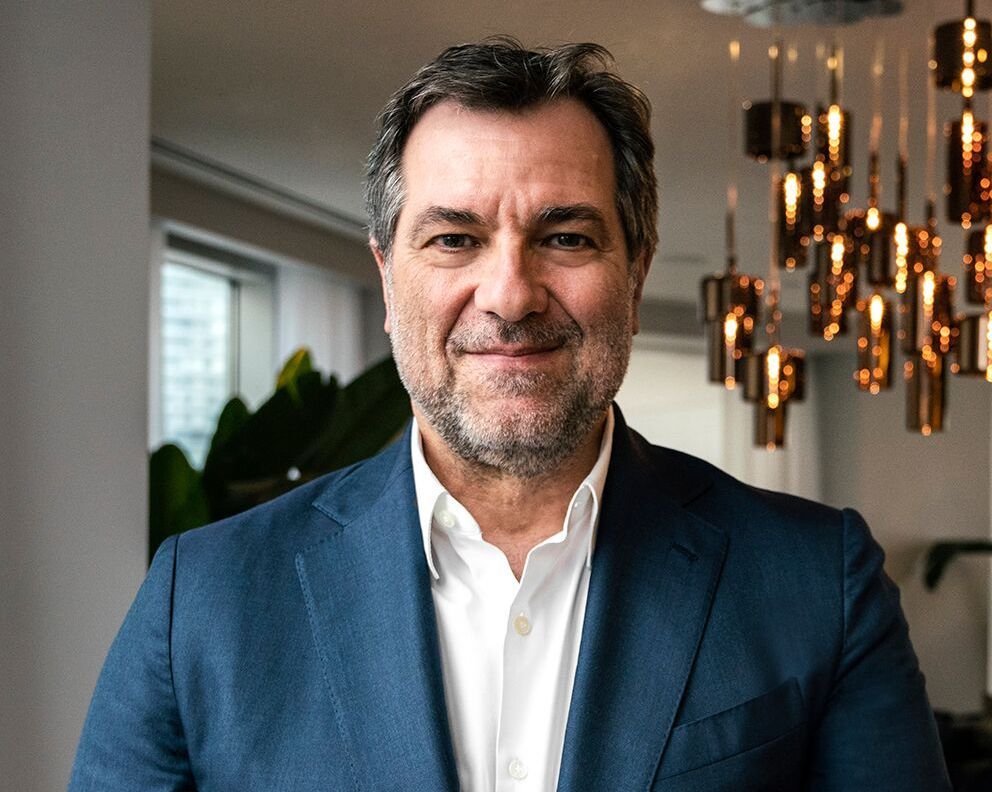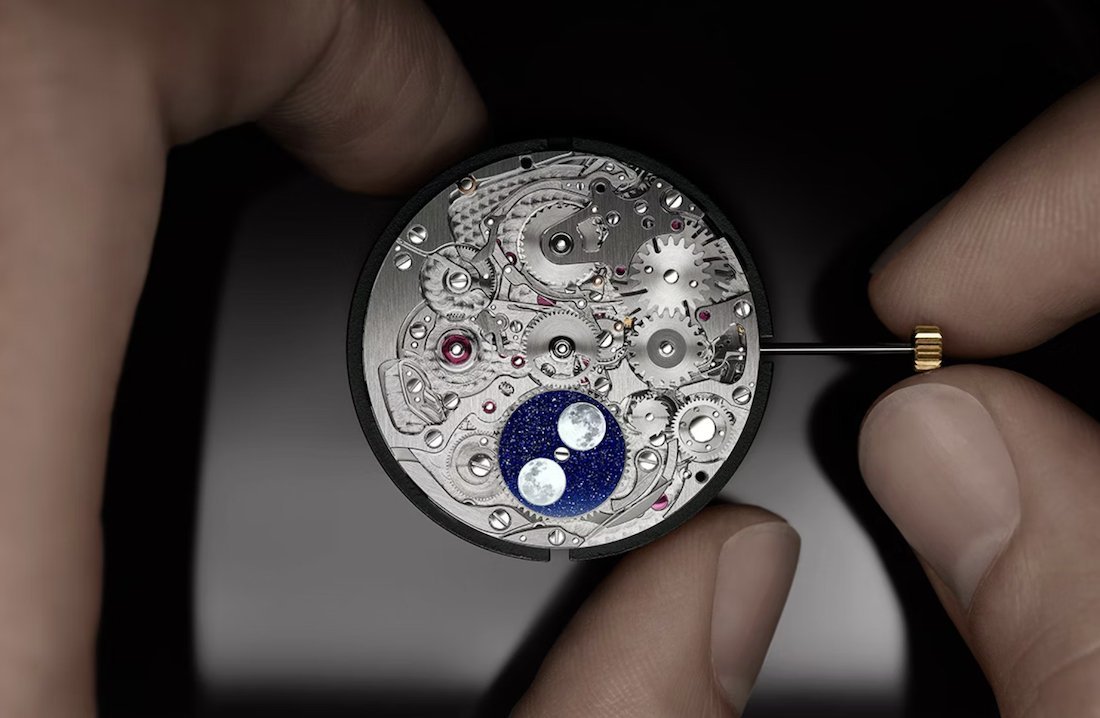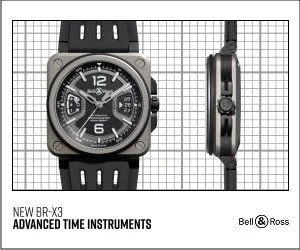The sudden removal of Ginny Wright from her post as CEO of Audemars Piguet North America—seems like it happened over a month ago and today here at WCL I still have not received a press release or official communication—sheds some light on what could be some growing pains or strategic reset at Audemars Piguet North America since the departure of François-Henry Bennahmias from the region in 2013, and the very calculated appointment of Ilaria Resta as the new CEO of Audemars Piguet in Le Brassus as of January 2024—but in a transitional role appointed August 2023.
From what I’ve heard through multiple insiders, the appointment of Ilaria Resta as the CEO of Audemars Piguet, and the appointment of Alessandro Bogliolo—former CEO of Tiffany & Co. from 2017 to 2021—as Chair of the Board of Directors at Audemars Piguet, was triggered by the Bottinelli family, who has substantial ownership at the company.
The Bottinelli family is one of the richest families in Switzerland with an estimated wealth of 1.5 Billion Swiss Francs and the second-largest shareholders at AP, alongside the Audemars and Piguet families. The Bottinelli family became stakeholders after Georges Golay—former CEO and Managing Director at AP back when the Royal Oak was launched—passed his shares to them.
Oliviero Bottinelli—former CEO of Audemars Piguet Asia Pacific—serves on the board of directors as well as his brother Pierangelo. Regardless of being Swiss, their Italian heritage might explain why they’ve chosen Italian executives like Resta and Bogliolo for such positions. Let’s not forget that Italy has played a very important role in the history of Audemars Piguet and the Royal Oak.
The Royal Oak was launched per request of Italian distributor Carlo De Marchi who was expecting an ‘Unprecedented Steel Watch’ at the time; 400 watches were sent directly to Italy out of the first batch of 1,000 Royal Oak Jumbos ref. 5402ST A-series—at a later time, another 1,000 watches joined the A-series with a total production of 2,000 watches. Let’s also not forget that Charles Gérald Genta the designer of the Royal Oak was Swiss but of Italian descent as his father was from the Piemonte region of Italy.
Interestingly enough, Ilaria Resta, Alessandro Bolioglo, and Ginny Wright have something in common as all of them share career trajectories that include companies in the beauty industry. Ilaria is a Procter & Gamble 22-year veteran who worked on hair care products; Alessandro worked for some time at Sephora; and Ginny Wright—a native of Greensboro, NC—held a long career with L’Oréal USA, Ralph Lauren fragrances, and Kiehl’s cosmetics.
Based on her previous expertise, it is easy to see why it was so hard for Ginny Wright to understand the complex dynamics of the luxury watch industry. An industry that requires unique leadership that differs significantly from other industries. In the Swiss watch industry, a CEO must balance heritage preservation with innovation, often managing brands that are centuries old while appealing to younger consumers without alienating old consumers.
However, in her case, a clear lack of understanding steered her into growing sales by alienating the original customer base and focusing on poor watch allocation practices, experiential marketing, and partnerships that led nowhere, other than hitting revenue goals at the expense of affecting the brand equity and brand perception. In her eyes, it was all about celebrities and throwing one more event for people who might have bought one AP to flex but that won’t buy a second one or remain with the brand for a lifetime.
I will never forget her arrogance, political Instagram posts that seemed very out of place considering her position, and the fact that she had the ‘bright idea’ of relocating the AP Service Center from Clearwater, FL to North Carolina—her home state—later this summer. Because of this decision, my Royal Oak Offshore Perpetual Calendar Chronograph is still in service after 17 weeks due to the backlog that this has caused in addition to the overwhelming amount of warranty repairs they are handling of the completely faulty and unreliable calibre 4400 powering the Royal Oak Offshore Chronograph 43 mm.
A Tale of Five CEOs in 12 Years
In 12 years, Audemars Piguet is now appointing its fifth CEO for North America since François-Henry Bennahmias was promoted to CEO of the brand in Le Brassus.
In April of 2013, François was replaced by Xavier Nolot—as far as I know, he is still with the company in Le Brassus as head of Supply Chain—who lasted four years and four months and was suddenly replaced by Audemars Piguet veteran Antonio Seward in 2017.
Seward had been with Audemars Piguet since 2008 working across different markets including Latin America and the Caribbean, Spain, Portugal, France, and Southeast Asia. In 2019, he left the company unexpectedly and was replaced by Patrick Ottomani on April 8, 2019. Ottomani came to Audemars Piguet from French leather goods maker Berluti where he had been since 1993. After less than two years, his sudden departure not only was very surprising but it shook Audemars Piguet amid the COVID pandemic.
Upon Patrick Ottomani’s sudden departure, in January 2021, Ginny Wright was appointed CEO of Audemars Piguet North America and you all now know how that ended. She leaves an unforgettable mark as the worst CEO I’ve met in the Swiss watch industry and an executive with very little people skills at least in the only interaction I had with her at the Audemars Piguet House in New York City. I’ve met every CEO from every Swiss watch brand, from Biver to Bonay and everyone in between, and all I can say is that all of them without exception are kind, savvy, polite, and extremely personable.
Photo of Ginny Wright from Getty Images.
The New CEO for North America a Veteran in Luxury Hospitality
Now comes Louis-Gabriel Fichet, a French executive who joined Audemars Piguet in 2020 after a diverse and eclectic professional career, mostly in hospitality. Originally from Chartres, France, where he lived during his youth, Louis-Gabriel Fichet dedicated himself to equestrian sports and was part of the French national show jumping team. He competed throughout Europe in numerous tournaments and became a professional rider until an injury prematurely ended his sporting career.
In 2004, he turned toward the gastronomy sector and joined Jean-Louis Costes' group—Hôtel Costes—as purchasing director and budget control manager. Two years later, he was promoted to director and purchasing coordinator of the Charraire group, a purveyor of fresh produce—fruits and vegetables—in France.
In 2008, together with a business partner, he opened two restaurants in Paris: Les Cinoches—permanently closed—and Le Café de L'Odéon—which seems to still be open. Upon concluding this three-year entrepreneurial phase, Louis-Gabriel established his consulting firm, F&B Consulting, which specialized in restructuring gastronomic businesses. It was during this period that he met Chef Alain Ducasse, who would have a decisive influence on his career by offering him the opportunity to participate in the reopening of the Hôtel Plaza Athénée in Paris as Food and Beverage director.
For five years, Fichet led a team of 250 employees and deepened his expertise in luxury hospitality. His passion for gastronomy and high-end hospitality led him in 2018 to be named deputy managing director of Ducasse Paris, a position that allowed him to work closely for two years alongside the Michelin guide-awarded chef.
In 2020, he left his position at Ducasse to assume the Hospitality Management role at Audemars Piguet, with the firm purpose of making the brand a benchmark of excellence in this field within the luxury sector. Louis-Gabriel dedicated all his efforts, together with his team, to creating unique experiences for the 5,000 annual visitors to the manufacture.
In December 2021, he assumed the role of Director of Retail, a position that allowed him to oversee subsidiaries distributed across five continents and travel to various boutiques and AP Houses. In July 2023, he was appointed general manager of Audemars Piguet France and Spain, and two years later he is set to run the biggest market for Audemars Piguet.
Now it is time to see what happens with Audemars Piguet North America and how this new CEO will handle things in the market. Do I foresee things will change and the brand will go through a strategic reset? I really hope so.
The Audemars Piguet Paradox: When Growth Threatens Exclusivity
Audemars Piguet has achieved extraordinary growth, with sales reaching CHF 2.4 billion while production has increased from around 45,000 watches in 2021 to 51,000 watches last year, with plans to reach 56,000-70,000 watches annually in the near future. However, this expansion strategy risks diluting the very exclusivity that made the brand valuable in the first place—at least for those of us who still appreciate such distinctions. I find myself nostalgic for 1998 when I purchased my first Royal Oak and no one recognized what I was wearing. I genuinely miss that anonymity. This trajectory concerns longtime AP devotees and compromises the quality controls that once defined the brand.
The company's plan to increase production from 50,000 to potentially 70,000 watches annually represents a 40% jump that would make them larger than Patek Philippe in production volume. This isn't gradual expansion—it's aggressive scaling that fundamentally reshapes the brand's market position. The irony is particularly bitter: longtime clients and decades-long supporters still cannot secure allocations at boutiques, even as production soars.
Scarcity as Strategy—Until It Wasn't
Audemars Piguet built its mystique on deliberate scarcity. The brand maintains strict production limits—approximately 1,450 watches per reference annually, dropping to just 1,000 units for coveted pieces like the Royal Oak Jumbo ref. 16202ST. Before the pandemic, this artificial constraint generated legendary waitlists and robust secondary market premiums that validated the brand's ultra-luxury positioning.
The production increase becomes more striking when viewed historically. The current output of 51,000 watches already represents a dramatic increase from previous decades when Audemars Piguet produced between 20,000 and 30,000 watches annually—levels more aligned with brands like Vacheron Constantin and befitting true exclusivity. The planned jump to 70,000 units would nearly double their historical output, abandoning the scarcity that once made ownership genuinely special.
Audemars Piguet historically maintained its allure by precisely managing production quantities to ensure demand always exceeded supply. This careful orchestration of scarcity was the cornerstone of the brand's exclusivity and mystique, regardless of pricing. Now, that delicate balance appears increasingly abandoned in favor of volume-driven growth. However, the execution has proven problematic. Questionable allocation practices at boutiques have alienated loyal customers, many of whom are now liquidating their collections rather than enduring the brand's increasingly arbitrary distribution system.
Warning Signs Emerge
Multiple indicators suggest this growth-at-all-costs approach is undermining the very exclusivity it claims to protect:
Secondary Market Decline: Data reveals AP watches have dropped nearly 20% year-over-year and 8.8% in six months. While three-quarters of some models still trade above retail, the trajectory signals eroding scarcity premiums. Recent auction results underscore this shift—Phillips Watches New York saw a Royal Oak 5402ST C-Series sell for USD 57,150, a price point unimaginable for this reference just two years ago.
Brand Identity Crisis: The pursuit of cultural relevance through celebrity collaborations and trendy limited editions has introduced volatility into what was once a stable luxury proposition. Industry insiders like me increasingly question whether Audemars Piguet is sacrificing its horological heritage for fleeting pop culture relevance, risking the dilution of its core brand identity in the process. The irony is stark in attempting to grow beyond its traditional boundaries, Audemars Piguet may be eroding the very exclusivity that created demand in the first place.
Distribution Concerns: While Audemars Piguet has successfully transitioned to a direct-to-consumer model operating their brand boutiques directly or through select partners generating over 70% of revenue through proprietary retail channels, their ambitious expansion plans will inevitably require additional distribution points. This scaling threatens to compromise the carefully curated boutique experience that has become central to the brand's luxury positioning. The challenge lies in maintaining intimate, exclusive environments while accommodating significantly higher production volumes—a balancing act that risks transforming AP's distinguished retail presence into something more commercially accessible and less genuinely exclusive.
The Heritage vs. Hype Dilemma
The brand faces persistent criticism as a "one-trick pony" due to its overwhelming dependence on the Royal Oak collection. The Code 11.59 and the Royal Oak Offshore have now officially turned into the gateway purchases and the only way to maybe one day get an allocation for a Royal Oak at an Audemars Piguet Boutique or AP House.
AP’s over-reliance on a single iconic design makes aggressive scaling particularly precarious, as increased production essentially translates to saturating the market with Royal Oak variants and multiple dial options and variations. No new complications or exploratory new ideas are becoming a reality in the Royal Oak lineup. Even the latest Royal Oak Perpetual Calendar reference 26674 is not that ground-breaking with its all-crown adjustments. If we pause for a moment and look around, years ago, brands like IWC were already offering that type of all-crown adjustment on the Big Pilot Perpetual Calendar.
The growth strategy introduces multiple strategic risks that threaten the brand's positioning. Unlike the luxury watch landscape where Rolex dominates through broad recognition and accessibility while Patek Philippe commands unquestioned exclusivity and prestige, Audemars Piguet risks becoming trapped in an uncomfortable middle ground—too common nowadays to maintain genuine exclusivity, yet too expensive in terms of value equation for broader market accessibility.
The brand's cultural identity faces increasing strain as it pursues relevance through boundary-pushing collaborations and pop culture partnerships becoming easy to recognize watch gracing the wrists of the nouveau riche. While this high-wire act has generated short-term success and doubled its revenue in less than five years, this strategy cannot sustain long-term brand equity or will ultimately result in a spectacular fall from grace as we are starting to see it. Those who today buy an AP watch as the ultimate flex goal, will not be repeating customers for the long haul.
The brand's transformation from a traditional brand part of the ‘Holy Trinity of Watchmaking’ to a cultural phenomenon through celebrity partnerships demands greater finesse as the company continues to expand production and revenue without continuing to destroy the exclusivity that originally created that demand.
Audemars Piguet's growth strategy represents a calculated but high-stakes gamble that prioritizes market expansion over traditional luxury positioning. While financially rewarding in the near term, this approach risks commoditizing a brand fundamentally built on scarcity and exclusivity. The company's ability to maintain cultural relevance while preserving luxury credibility will ultimately determine whether this growth model succeeds or undermines the brand's long-term value proposition.
I guess I’ll just have to wait and see if we are on the verge of a strategic reset or simply the aching growing pains of Audemars Piguet.
For more info on Audemars Piguet click here.



























